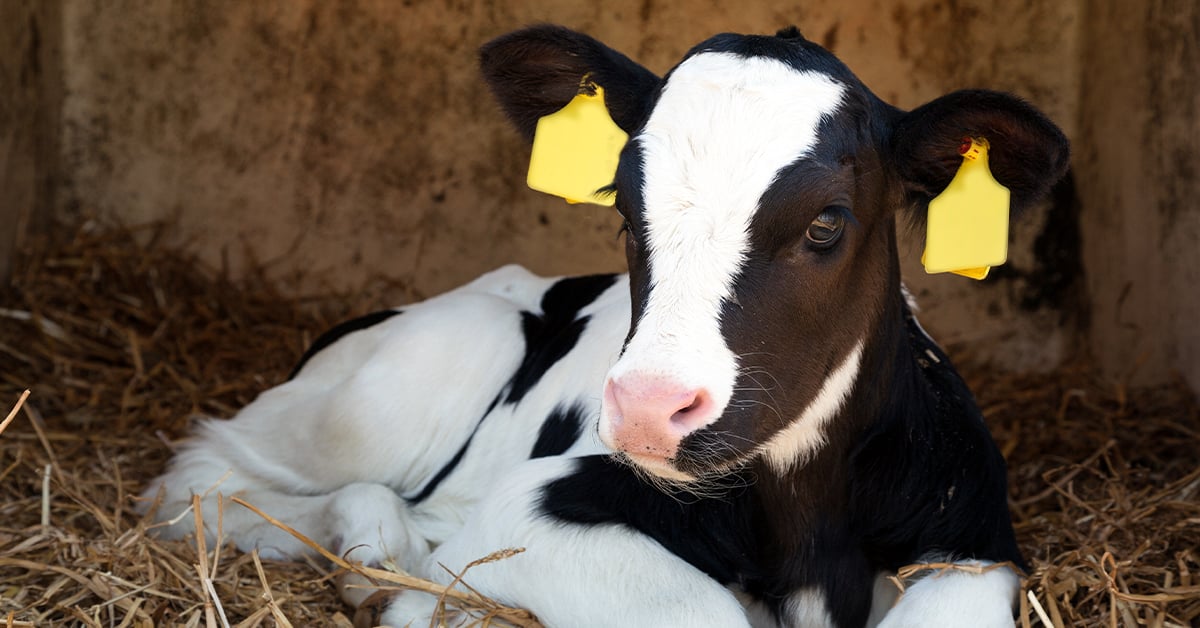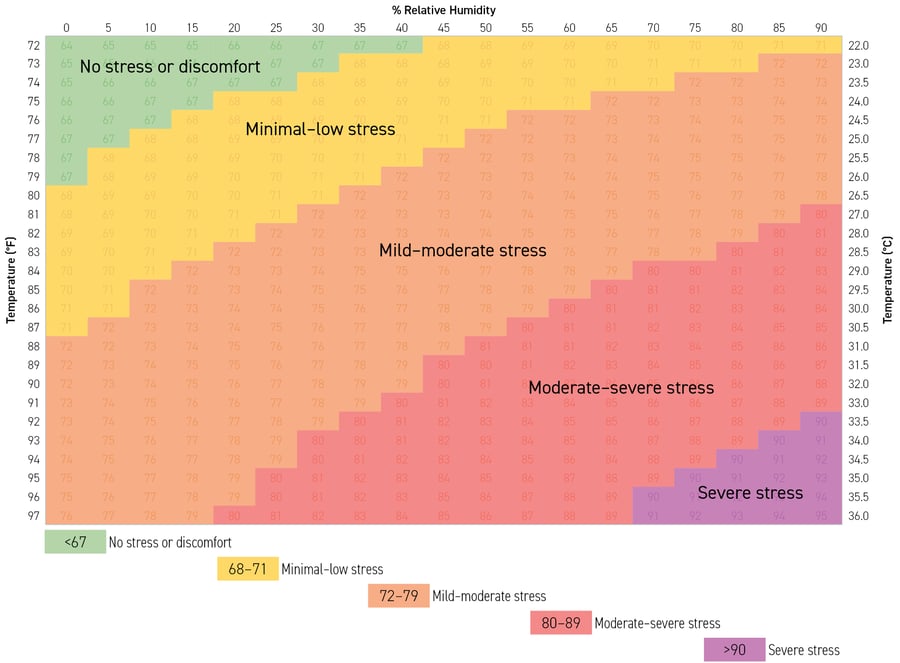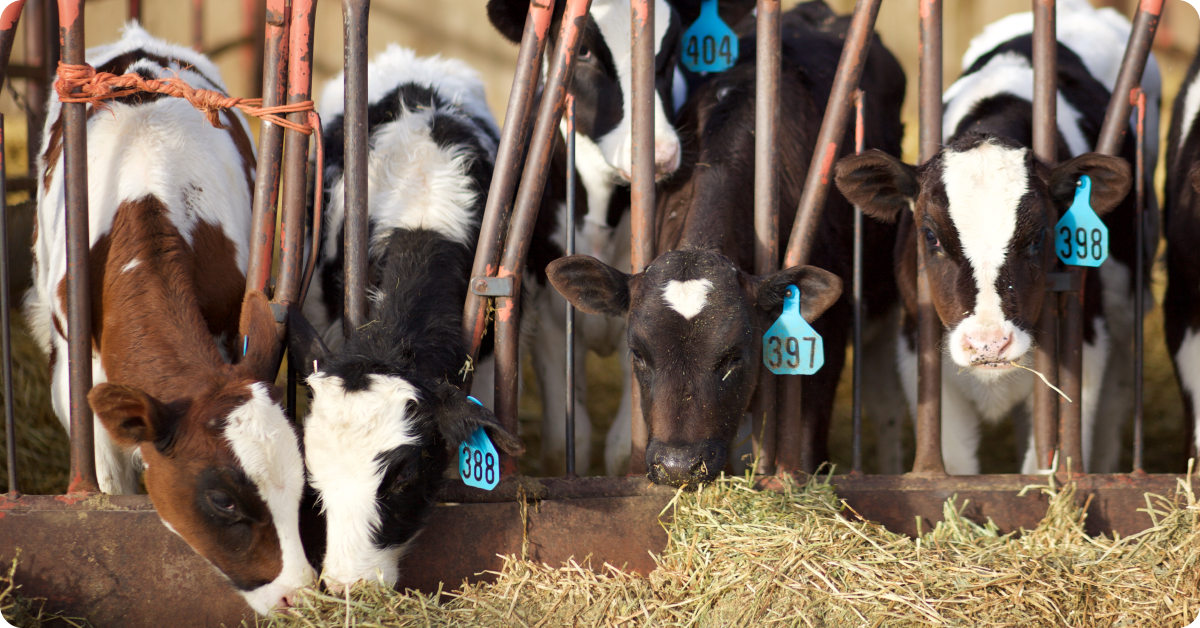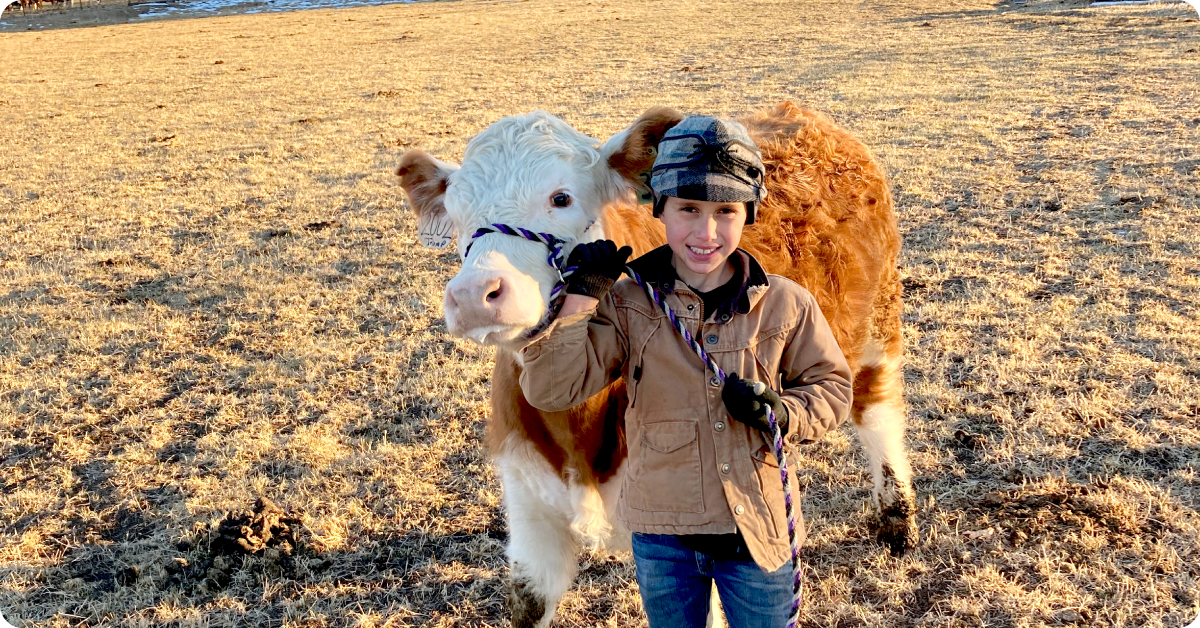
We welcome the coming of fall and are thankful the heat of the summer is behind us. The cool fall days are an omen winter is approaching, and it is time to think of modifying your protocols for raising calves to address the changing metabolic needs brought on by decreasing temperatures and shorter day lengths.
Vaccines & Early Treatment Help Prevent Respiratory Disease
One of the first issues we run into in the fall is an increase in the number of coughing calves. The combination of warm days and colder nights is the perfect setup for an increase in respiratory disease.
This increase in coughing calves may be caused by their mothers experiencing heat stress during the last 90 days of pregnancy. Data from the University of Florida and the University of California, Davis indicates that heat stress during the last 90 days of pregnancy has lasting negative effects for daughters and granddaughters; including decreased birth rate, lower survival rate from birth to first calving and lower lifetime lactation yields. Researchers also found that end-of-lactation involution of the udder and subsequent proliferation in the weeks before calving were minimized and delayed, which could negatively affect colostral antibody quality.
Lastly, higher cortisol levels in heat-stressed cattle decrease their immune response to booster vaccines given during the dry period. All these factors may impact a calf’s innate immunity and their ability to fend off the opportunistic viruses and pathogenic bacteria which commonly inhabit their respiratory tract and surrounding environment. Calf raisers must be alert to these issues and prepared to monitor animals’ behavior and temperature, and then address any issues that arise according to their veterinarian’s directions.
Colder Temperatures Mean Changing Dietary Needs
Increase Your Calves' Protein & Fat Intake
Along with providing ideal conditions for respiratory disease, the changing fall temperatures also increase a calf’s metabolic protein and energy demand. The thermoneutral zone, the range in temperature where the calf is not stressed, runs from 65–82°F (figure 1) so a summer diet designed to double their weight from birth to weaning—a goal every producer should strive for—will quickly become insufficient as the nighttime temperatures drop.
Figure 1: Heat Stress and Performance of Calves
 Source: Van Amburgh, 2020
Source: Van Amburgh, 2020
Therefore, it is necessary to increase the total amount of protein and energy consumed daily to continue meeting the calf’s nutritional needs. For example, an 88 lb calf housed at 68°F ambient temperature requires 1.6 Mcal of energy daily, while the same calf at 32°F ambient temperature now requires 2.4 Mcal, a 50% increase. In this scenario, at 68°F the calf needs 0.75 lb of a typical 20:20 all-milk milk replacer (2.12 Mcal/lb of powder) to maintain its weight (0 lb average daily gain) but at 32°F they need 1.13 lb of the same milk replacer to maintain themself.
However, we want this calf to double its body weight by weaning—which is at 60 days for most calves. For this 88 lb calf to double its weight in 60 days it needs to gain 1.47 lb/day on average. This means our calf needs another 0.89 lbs of 20:20 MR to reach its goal weight.
Instead of increasing the amount of milk replacer (MR), many people have success switching to a MR with a higher percentage of protein and fat, like a 24:20 or 26:22 MR, which allows them to continue their feed quantities and schedule of 2 quarts 3 times a day or 3 q twice a day.
Keep in mind, one downside to feeding a higher solids MR is the risk of getting solids (protein, fat, sugars, ash, NDF) and osmolality too high. Feeding fluids, either MR or electrolytes, can lead to loose feces. High osmolality can make the gut epithelium more permeable to infectious agents. Whole milk averages 12.5% solids, Jersey milk would be somewhat higher. To avoid these drawbacks, target solids level for milk replacer should be <14%.
Check out other articles on cattle health from IFA Feed & Nutrition Experts
Prioritize High-Quality Grain & Water
Along with milk replacer, it is important to provide a high-quality starter grain and clean water. Having water always readily available in the winter is a constant challenge, but it is necessary to get calves to eat and digest calf starter grains.

Producers who provide smaller amounts of warm water frequently during the day seem to have the best success with greater starter intakes and lower rates of morbidity and mortality in pre-weaned and just weaned calves.
When looking for a starter grain, or making one yourself, look for a product that has a large number of coarse grains and/or pellets with a minimum amount of fine powder. A good starter will have crude protein (CP) of 24–26%. Feeding the right amount of protein will ensure your animals reach their genetic potential height at puberty.
High-quality calf starters have a starch level under 30%, a neutral detergent fiber (NDF) level of 20% or more and a high level of sugar, 14% or more. The starter should have a good aroma to entice the calf to eat. Additives such as live yeast or yeast cultures and probiotics can help with maintaining a good intestinal flora helping reduce opportunistic organisms from establishing a foothold. A good starter should have a coccidiostat; decoquinate, lasalocid or monensin.
Winter Shelter for Calves
Now is a good time to look at the calf’s environmental exposure. Do they have access to shelter to keep them out of the wind, rain and snow? With this year’s drought, straw, a staple bedding for calves might be scarce or high priced. Wood chips or sawdust can be an alternative, but they have their limitations.
Sawdust, and some wood chips, can be very dusty irritating the respiratory tract, they tend to stick to newborns or calves with diarrhea and support more organic bacterial growth than straw. Wood chips and sawdust also do not allow the calf to nest down inside like a thick straw pack, protecting themselves from the wind.
Conclusion
Being proactive in reviewing your processes and protocols for feeding, treating and bedding your calves now can save you from a train wreck when the weather turns much colder, ensuring that you have a good number of disease-free calves ready to grow up to be productive members of your herd.
Need help or supplies? Call your IFA Feed & Nutrition expert or visit your local IFA Country Store.
Discover IFA Feed & Nutrition Services
Written by Douglas Skyer, DVM, MBA and originally published in the IFA Cooperator magazine (vol. 87, no. 3) Fall 2021.
Doug has a Doctor of Veterinary Medicine from the University of Wisconsin with 30-years of experience working with dairies in WI, ID, WA, OR and UT on nutrition and herd health. Doug began his career as a mixed animal veterinarian in Wisconsin where he saw first-hand how important nutrition is for cow productivity and farm profitability in dairy operations. Combining this experience with skills learned while earning his Masters of Business Administration (MBA) from Boise State University helped Doug develop his unique business-based approach to improve animal health at the farm level in order to maximize overall producer profits. When not working with producers, Doug spends time with his family, skiing, hiking, biking and exploring the natural wonders Utah has to offer.
Additional information for this article was found in Laporta et al, Late-gestation heat stress impairs daughter and granddaughter lifetime performance, Journal of Dairy Science (2020). DOI: 10.3168/jds.2020-18154

